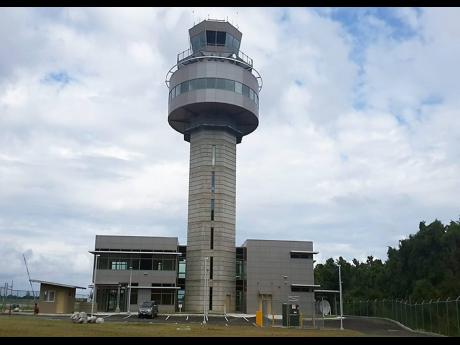MBJ Airport ramps up capex for post-COVID gain
It’s a tale of two cities and the different paths being taken by the airports serving them. MBJ Airports Limited, operator of the Sangster International in resort city Montego Bay, is pressing ahead with some of its US$112-million five-year capital spending commitments to 2024, under its lease agreement plus other infrastructure works.
This is despite the hallowing out of its passenger numbers and revenues by the COVID-19 pandemic, and even as its sister company PAC Kingston Airport Limited, PACKAL, is calling time-out on its US$100-million infrastructure commitments at the airport it runs in the nation’s capital.
Both companies are subsidiaries of Mexican airports operator Grupo Aeroportuario del Pacífico SAB, or GAP – which translates in English to Pacific Airport Group. PACKAL is wholly owned, while the Mexican firm owns 74.5 per cent of MBJ, with Canada’s Vantage Airport Group owning 25.5 per cent.
Capital works at Sangster International, including runway extension, shoreline protection, apron and departures area expansion, and a major overhaul of its air-conditioning system, were in train before the pandemic and are moving full steam ahead for a planned completion next year.
The first phase of a US$3-million one-megawatt solar power installation project is slated for completion by December, with the airport operator readying to move into phase two next year. The renewable power is expected to result in energy cost savings of 33 per cent.
According to the financials of its parent, MBJ committed to a capital development programme of US$37.9 million for the five years April 2015 to March 2020 and had made capital investments of US$54.8 million up to December last year. Two year ago, MBJ said a US$40-million makeover there was being done with loan financing secured in 2017 from Scotiabank Jamaica. The company returned to Scotiabank two months ago to borrow another US$60 million to fund some current capital development projects and for general corporate purposes.
“At the start of the pandemic, we chose to prioritise projects that reduce operational costs, improve operational efficiency and/or provide economic benefit,” said MBJ Airport CEO Shane Munroe in an interview with the Financial Gleaner.
“MBJ continues to pursue projects required to maintain the airport infrastructure, such as replacement of the HVAC chillers; or result in operational efficiency, such as the solar PV project – and [we] have also used the downtime to execute projects that would have otherwise been disruptive, such as the expansion of the departures retail area and rehabilitation of our airfield pavement,” he said.
Plans deferred
Munroe noted, however, that the full capital programme is being curtailed for the airport that handles more than 70 per cent of Jamaica’s tourist arrivals.
“The installation of some master plan projects have been deferred, and MBJ intends to execute those projects in line with the recovery in passenger traffic,” he said.
With debt servicing coming from cash flow, the airport operator no doubt has an eye on plummeting revenues, which are directly tied to passenger numbers, even as it pushes ahead with upgrades in line with Munroe’s optimism for a big traffic return in the near future.
GAP reported in January that passenger numbers had grown five per cent year-on-year in 2019 to 4.7 million, with more than one million people using the airport in the final three months last year, before registering a more than 15 per cent decline in the first quarter this year over the same period of 2019.
A more precipitous decline came in the second quarter, when passenger numbers plunged 97 per cent over the similar period in 2019, as the Government shuttered airports in response to the first case of the COVID-19 disease in the country.
In its nine-month financials, GAP reported that passenger traffic at Sangster was a mere 174,500 for the three months to September this year, down 84 per cent for the quarter and shrinking by more than 63 per cent over nine months.
Nine-month aeronautical revenues from airline charges at Sangster International fell by US$29.4 million, or nearly 50 per cent, compared to the similar period of 2019. This includes passenger departure fees and aircraft landing and parking charges.
Also going significantly south were revenues from non-aeronautical services – commercial space rental, fees paid by advertisers, and certain ground transport providers, as well as income from businesses operated by the airport, such as car parks and VIP lounges.
And with the significant fall-off or wipeout of sales for the airport’s approximately 70 tenants, some business operators there have called it quits. Two speciality retail shops, two tour operators and an attraction business have packed it in.
The business closures come despite what Munroe says is the provision of significant relief to the concessionaires by way of more than US$9 million in rental reductions and commercial fees waived from March to year end.
Most tenant contracts at GAP airports are royalty-based, with tenants paying a portion of revenues, plus minimum fixed amounts based on square footage.
“We intend to continue providing relief for our commercial concessionaires through 2021, in line with the recovery in passenger traffic,” Munroe noted.


